Q. I am getting “Press Allow to Continue” pop-ups and cannot figure out how to remove it. My antivirus software does not seem to see it as a threat. Somebody can you help me please.
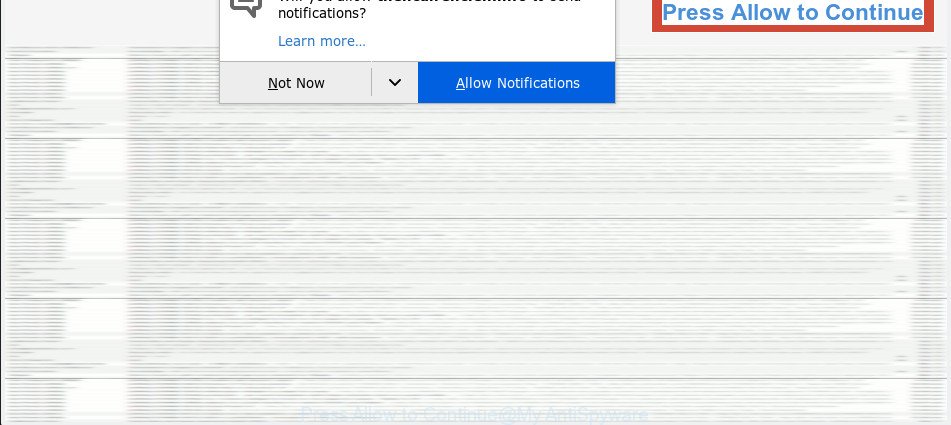
“Press Allow to Continue” pop-up
A. “Press Allow to Continue” pop-up is a misleading web-page that designed to force you into subscribing to its push notifications so that they can send unwanted ads directly to your desktop. If you are experiencing constant “Press Allow to Continue” pop-up, unwanted ads, trips to websites you did not intend to visit, then it is possible that your personal computer has become a victim of a malicious software from Adware (also known as ‘adware software’) family.
What you need to know about Adware.
Adware is software related to unwanted pop-ups and advertisements. Some adware will bring up ads when you is surfing the Internet, while other will build up a profile of your browsing habits in order to target advertisements. In general, adware software have to be installed on your machine, so it’ll tend to be bundled with other apps in much the same way as PUPs.
You may experience the following if your internet browser is infected by adware:
- intrusive toolbars;
- popups and newtab pages are loaded without your request;
- your browser is re-directed to web-pages you did not want;
- your machine is no stable leading to freezes;
- your system settings are being altered without your request.
It’s important, don’t trust “Press Allow to Continue” web-page and don’t click on Allow button placed on it. The best option is to use the few simple steps posted below to free your computer of adware and thereby delete “Press Allow to Continue” pop-ups.
How to remove “Press Allow to Continue” popups
Most often adware requires more than a simple uninstall with the help of Windows Control panel in order to be fully uninstalled. For that reason, our team designed several removal ways that we’ve combined in a detailed instructions. Therefore, if you have the intrusive “Press Allow to Continue” pop up on your PC and are currently trying to have it deleted then feel free to follow the few simple steps below in order to resolve your problem. Read it once, after doing so, please print this page as you may need to close your internet browser or restart your computer.
To remove “Press Allow to Continue” pop-up scam, perform the steps below:
- Get rid of “Press Allow to Continue” pop up without any utilities
- How to automatically remove “Press Allow to Continue” pop ups
- How to Stop “Press Allow to Continue” pop ups
- How can you prevent your PC system from the attack of adware
- To sum up
Get rid of “Press Allow to Continue” pop up without any utilities
If you perform exactly the step-by-step guidance below you should be able to remove the “Press Allow to Continue” popups from the Microsoft Internet Explorer, Google Chrome, MS Edge and Firefox web browsers.
Uninstall potentially unwanted applications through the MS Windows Control Panel
The process of adware removal is generally the same across all versions of Windows OS from 10 to XP. To start with, it’s necessary to check the list of installed programs on your PC system and delete all unused, unknown and questionable programs.
- If you are using Windows 8, 8.1 or 10 then click Windows button, next click Search. Type “Control panel”and press Enter.
- If you are using Windows XP, Vista, 7, then click “Start” button and click “Control Panel”.
- It will show the Windows Control Panel.
- Further, click “Uninstall a program” under Programs category.
- It will show a list of all apps installed on the computer.
- Scroll through the all list, and uninstall questionable and unknown apps. To quickly find the latest installed programs, we recommend sort software by date.
See more details in the video instructions below.
Remove “Press Allow to Continue” popups from Google Chrome
If you have adware software, “Press Allow to Continue” pop up problems or Google Chrome is running slow, then reset Google Chrome can help you. In this instructions we will show you the way to reset your Chrome settings and data to default state without reinstall.
First launch the Chrome. Next, press the button in the form of three horizontal dots (![]() ).
).
It will open the Chrome menu. Choose More Tools, then click Extensions. Carefully browse through the list of installed extensions. If the list has the extension signed with “Installed by enterprise policy” or “Installed by your administrator”, then complete the following guide: Remove Google Chrome extensions installed by enterprise policy.
Open the Google Chrome menu once again. Further, press the option called “Settings”.
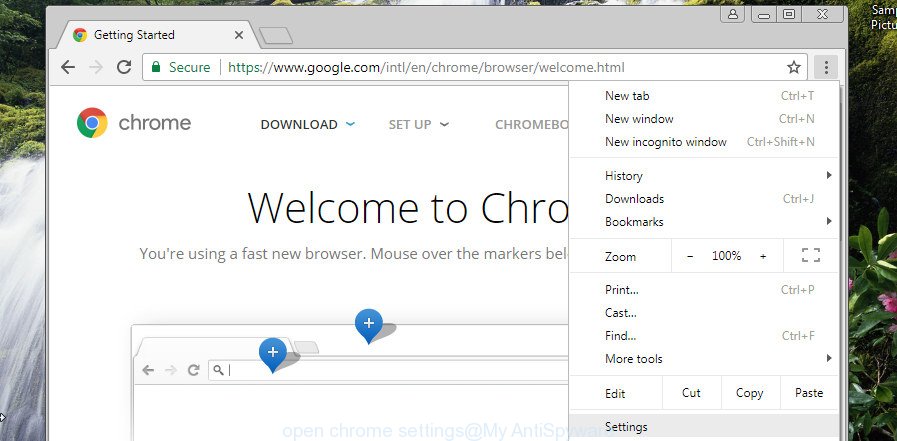
The internet browser will show the settings screen. Another solution to show the Chrome’s settings – type chrome://settings in the web browser adress bar and press Enter
Scroll down to the bottom of the page and press the “Advanced” link. Now scroll down until the “Reset” section is visible, like below and press the “Reset settings to their original defaults” button.
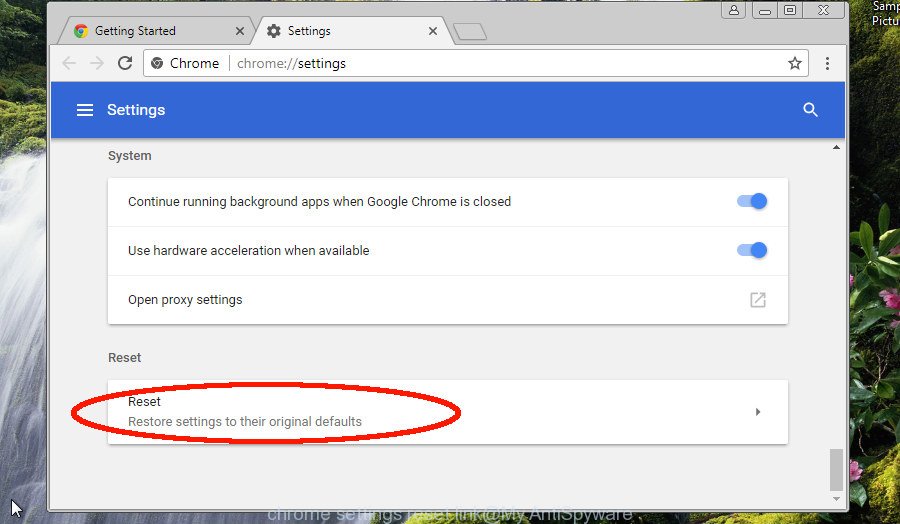
The Chrome will open the confirmation dialog box as shown in the figure below.

You need to confirm your action, click the “Reset” button. The internet browser will start the procedure of cleaning. After it’s complete, the internet browser’s settings including search provider, homepage and new tab page back to the values that have been when the Google Chrome was first installed on your PC system.
Remove “Press Allow to Continue” popups from Internet Explorer
If you find that Internet Explorer web browser settings had been changed by adware that cause undesired “Press Allow to Continue” popups, then you may return your settings, via the reset internet browser procedure.
First, run the IE. Next, click the button in the form of gear (![]() ). It will open the Tools drop-down menu, press the “Internet Options” like below.
). It will open the Tools drop-down menu, press the “Internet Options” like below.

In the “Internet Options” window click on the Advanced tab, then click the Reset button. The Internet Explorer will open the “Reset Internet Explorer settings” window like below. Select the “Delete personal settings” check box, then press “Reset” button.

You will now need to restart your PC for the changes to take effect.
Delete “Press Allow to Continue” from Mozilla Firefox by resetting internet browser settings
If Firefox settings are hijacked by the adware software, your web-browser displays intrusive popup ads, then ‘Reset Mozilla Firefox’ could solve these problems. When using the reset feature, your personal information such as passwords, bookmarks, browsing history and web form auto-fill data will be saved.
Press the Menu button (looks like three horizontal lines), and click the blue Help icon located at the bottom of the drop down menu like below.
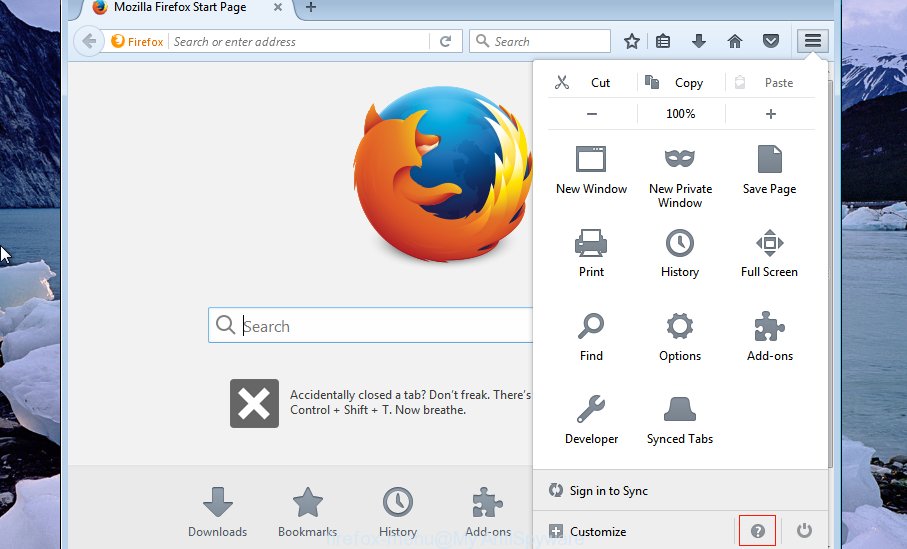
A small menu will appear, press the “Troubleshooting Information”. On this page, click “Refresh Firefox” button as displayed below.

Follow the onscreen procedure to return your Firefox internet browser settings to their default values.
How to automatically remove “Press Allow to Continue” pop ups
AntiMalware software differ from each other by many features such as performance, scheduled scans, automatic updates, virus signature database, technical support, compatibility with other antivirus programs and so on. We suggest you run the following free apps: Zemana, MalwareBytes Anti-Malware (MBAM) and HitmanPro. Each of these applications has all of needed features, but most importantly, they can identify the adware and get rid of “Press Allow to Continue” pop ups from the Mozilla Firefox, Chrome, Microsoft Internet Explorer and MS Edge.
Run Zemana Anti-Malware (ZAM) to delete “Press Allow to Continue” pop ups
Zemana AntiMalware is a lightweight utility which created to run alongside your antivirus software, detecting and deleting malicious software, adware and potentially unwanted applications that other programs miss. Zemana Anti Malware is easy to use, fast, does not use many resources and have great detection and removal rates.
Visit the following page to download the latest version of Zemana Anti Malware (ZAM) for MS Windows. Save it to your Desktop so that you can access the file easily.
165054 downloads
Author: Zemana Ltd
Category: Security tools
Update: July 16, 2019
Once the download is finished, close all applications and windows on your personal computer. Double-click the install file called Zemana.AntiMalware.Setup. If the “User Account Control” dialog box pops up as shown on the image below, click the “Yes” button.
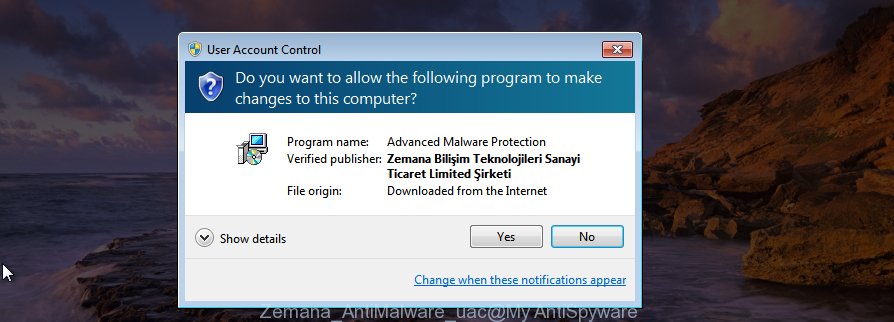
It will open the “Setup wizard” which will help you setup Zemana on your system. Follow the prompts and don’t make any changes to default settings.
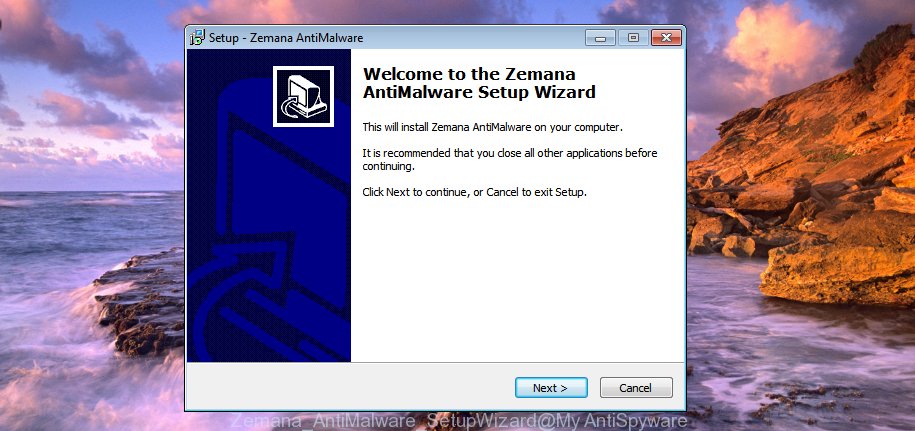
Once installation is finished successfully, Zemana Anti Malware will automatically start and you can see its main screen as shown in the following example.
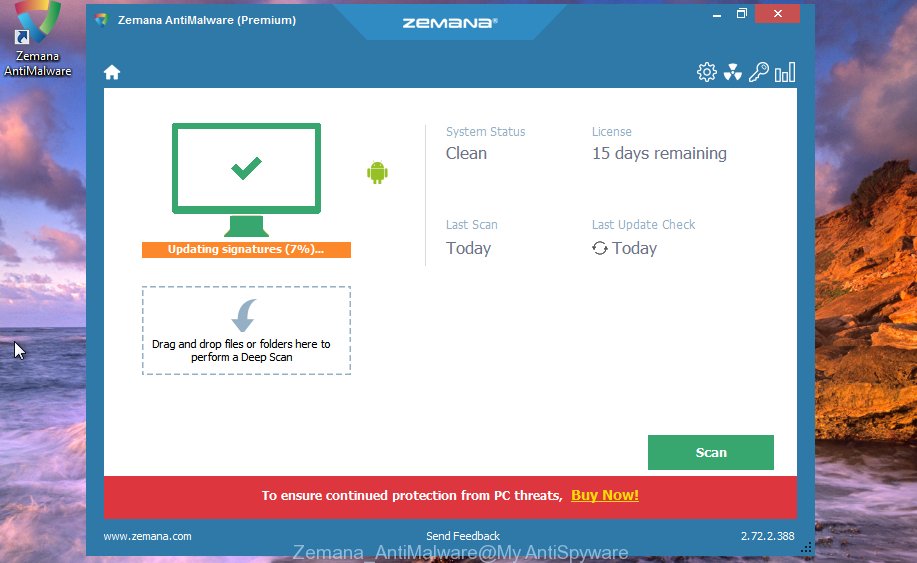
Now click the “Scan” button . Zemana Anti Malware utility will begin scanning the whole computer to find out adware software which cause pop ups. A scan can take anywhere from 10 to 30 minutes, depending on the number of files on your machine and the speed of your PC system. While the Zemana Free is checking, you can see count of objects it has identified either as being malware.

When the scan is finished, Zemana Anti Malware will show a list of detected items. You may remove threats (move to Quarantine) by simply click “Next” button. The Zemana Anti Malware will get rid of adware software that causes “Press Allow to Continue” pop-ups in your internet browser and add items to the Quarantine. When that process is complete, you may be prompted to restart the machine.
Use HitmanPro to remove “Press Allow to Continue” popups from browser
Hitman Pro is a free removal utility. It removes PUPs, adware software, browser hijackers and undesired web browser extensions. It will identify and delete adware that causes “Press Allow to Continue” pop-ups in your web-browser. HitmanPro uses very small computer resources and is a portable application. Moreover, Hitman Pro does add another layer of malware protection.
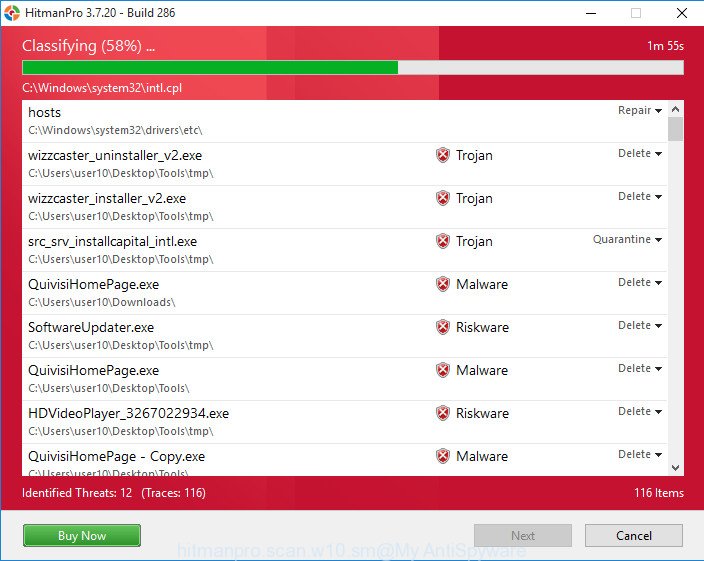
- HitmanPro can be downloaded from the following link. Save it on your MS Windows desktop or in any other place.
- When the downloading process is done, launch the Hitman Pro, double-click the HitmanPro.exe file.
- If the “User Account Control” prompts, press Yes to continue.
- In the Hitman Pro window, press the “Next” . HitmanPro tool will begin scanning the whole computer to find out adware related to the “Press Allow to Continue” pop-ups. A scan can take anywhere from 10 to 30 minutes, depending on the count of files on your computer and the speed of your computer. When a threat is found, the number of the security threats will change accordingly. Wait until the the checking is complete.
- As the scanning ends, you can check all threats found on your PC system. Review the report and then click “Next”. Now, click the “Activate free license” button to start the free 30 days trial to get rid of all malicious software found.
Scan and clean your personal computer of adware with MalwareBytes
We advise using the MalwareBytes Free that are fully clean your machine of the adware software. The free utility is an advanced malicious software removal program designed by (c) Malwarebytes lab. This program uses the world’s most popular anti-malware technology. It’s able to help you delete undesired “Press Allow to Continue” popup from your web browsers, PUPs, malware, browser hijacker infections, toolbars, ransomware and other security threats from your system for free.
Click the following link to download MalwareBytes Anti-Malware (MBAM). Save it on your Desktop.
327280 downloads
Author: Malwarebytes
Category: Security tools
Update: April 15, 2020
After the downloading process is finished, close all windows on your system. Further, launch the file called mb3-setup. If the “User Account Control” dialog box pops up like below, click the “Yes” button.

It will open the “Setup wizard” which will allow you install MalwareBytes Free on the machine. Follow the prompts and don’t make any changes to default settings.
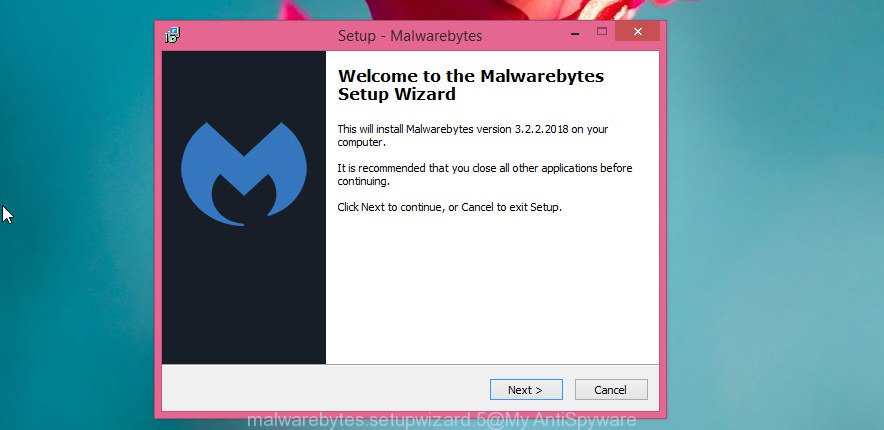
Once installation is finished successfully, click Finish button. Then MalwareBytes AntiMalware (MBAM) will automatically run and you can see its main window like below.
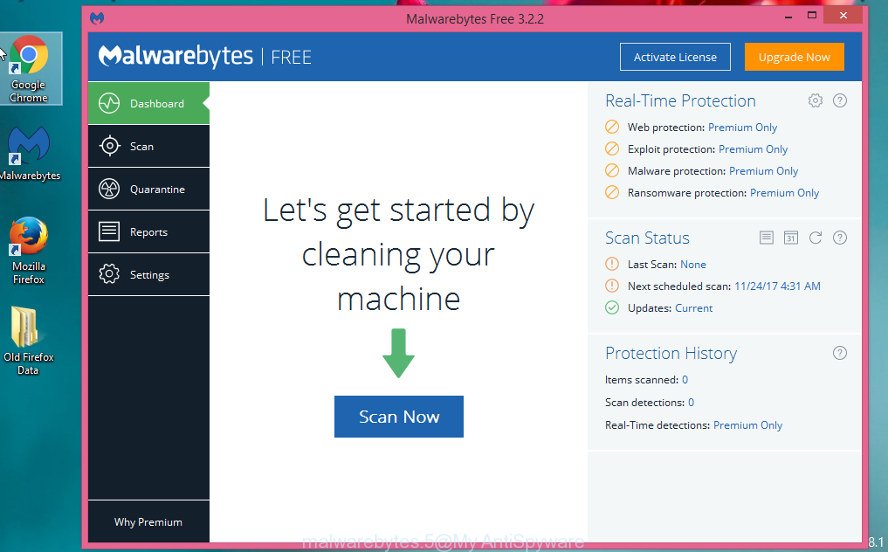
Next, click the “Scan Now” button to begin checking your system for the adware responsible for “Press Allow to Continue” pop-ups. A scan can take anywhere from 10 to 30 minutes, depending on the number of files on your machine and the speed of your computer. When a threat is found, the count of the security threats will change accordingly.
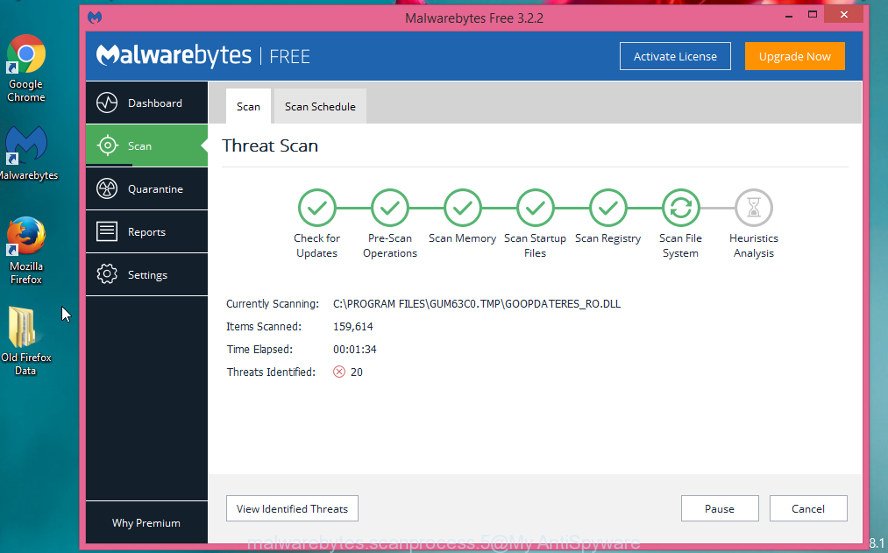
Once MalwareBytes Anti Malware (MBAM) has completed scanning, a list of all items found is produced. Review the scan results and then press “Quarantine Selected” button.
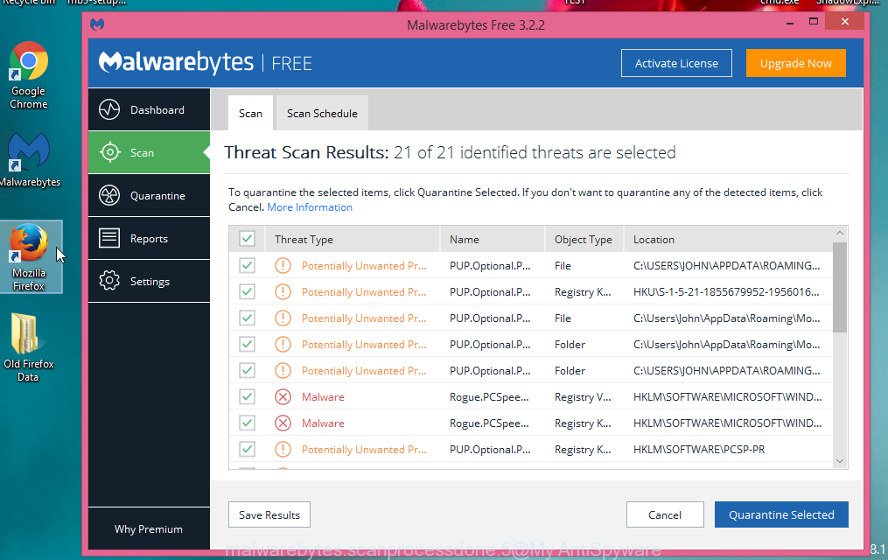
The MalwareBytes will get rid of adware which causes annoying “Press Allow to Continue” pop-up and move threats to the program’s quarantine. When that process is finished, you may be prompted to restart your system. We suggest you look at the following video, which completely explains the procedure of using the MalwareBytes Anti Malware to delete browser hijackers, adware and other malicious software.
How to Stop “Press Allow to Continue” pop ups
If you want to get rid of unwanted advertisements, web-browser redirects and pop ups, then install an ad blocker program like AdGuard. It can block “Press Allow to Continue” scam, advertisements, popups and block webpages from tracking your online activities when using the Edge, Firefox, Internet Explorer and Chrome. So, if you like browse the Net, but you don’t like unwanted ads and want to protect your computer from harmful web-pages, then the AdGuard is your best choice.
- Click the link below to download the latest version of AdGuard for Windows. Save it on your Microsoft Windows desktop.
Adguard download
26903 downloads
Version: 6.4
Author: © Adguard
Category: Security tools
Update: November 15, 2018
- When the downloading process is finished, start the downloaded file. You will see the “Setup Wizard” program window. Follow the prompts.
- Once the setup is done, click “Skip” to close the installation program and use the default settings, or press “Get Started” to see an quick tutorial which will assist you get to know AdGuard better.
- In most cases, the default settings are enough and you don’t need to change anything. Each time, when you start your personal computer, AdGuard will run automatically and stop unwanted advertisements, block “Press Allow to Continue” scam, as well as other malicious or misleading web-pages. For an overview of all the features of the program, or to change its settings you can simply double-click on the icon named AdGuard, which is located on your desktop.
How can you prevent your PC system from the attack of adware
Most commonly, the freeware installer includes additional programs like this adware. So, be very careful when you agree to install anything. The best way – is to choose a Custom, Advanced or Manual installation option. Here disable all optional apps in which you are unsure or that causes even a slightest suspicion. The main thing you should remember, you do not need to install any additional applications which you don’t trust!
To sum up
Now your system should be clean of the adware that causes “Press Allow to Continue” pop-ups in your web browser. We suggest that you keep Zemana Anti Malware (ZAM) (to periodically scan your personal computer for new adwares and other malware) and AdGuard (to help you stop undesired popups and malicious webpages). Moreover, to prevent any adware, please stay clear of unknown and third party programs, make sure that your antivirus program, turn on the option to search for potentially unwanted apps.
If you need more help with “Press Allow to Continue” popups related issues, go to here.




















